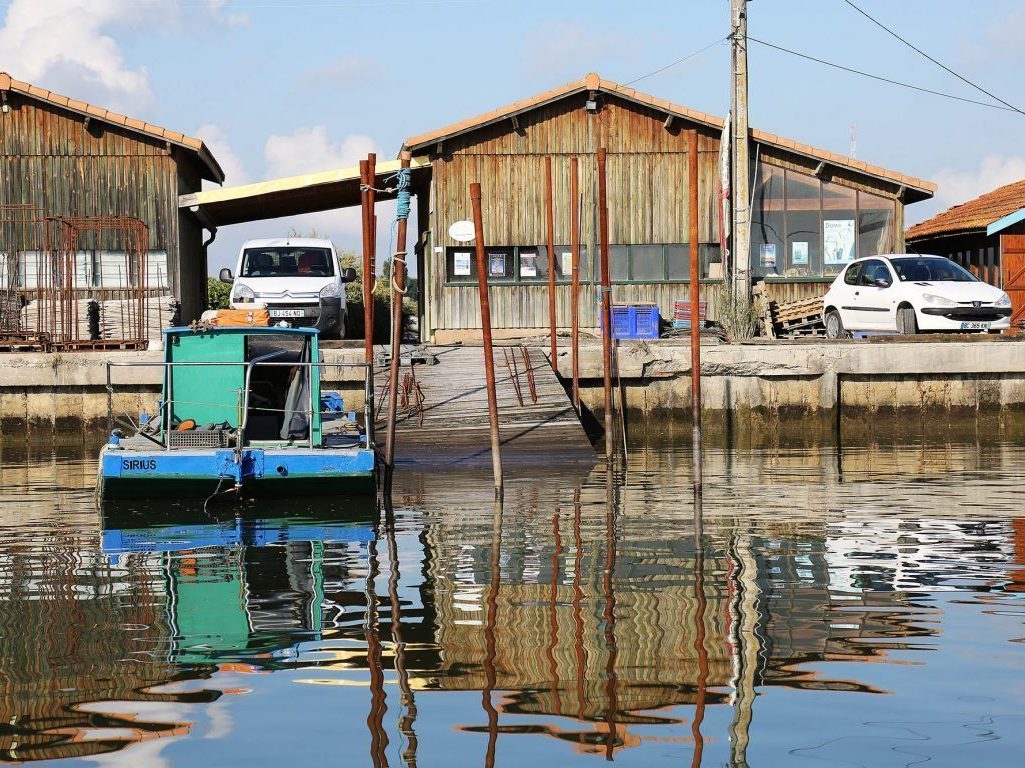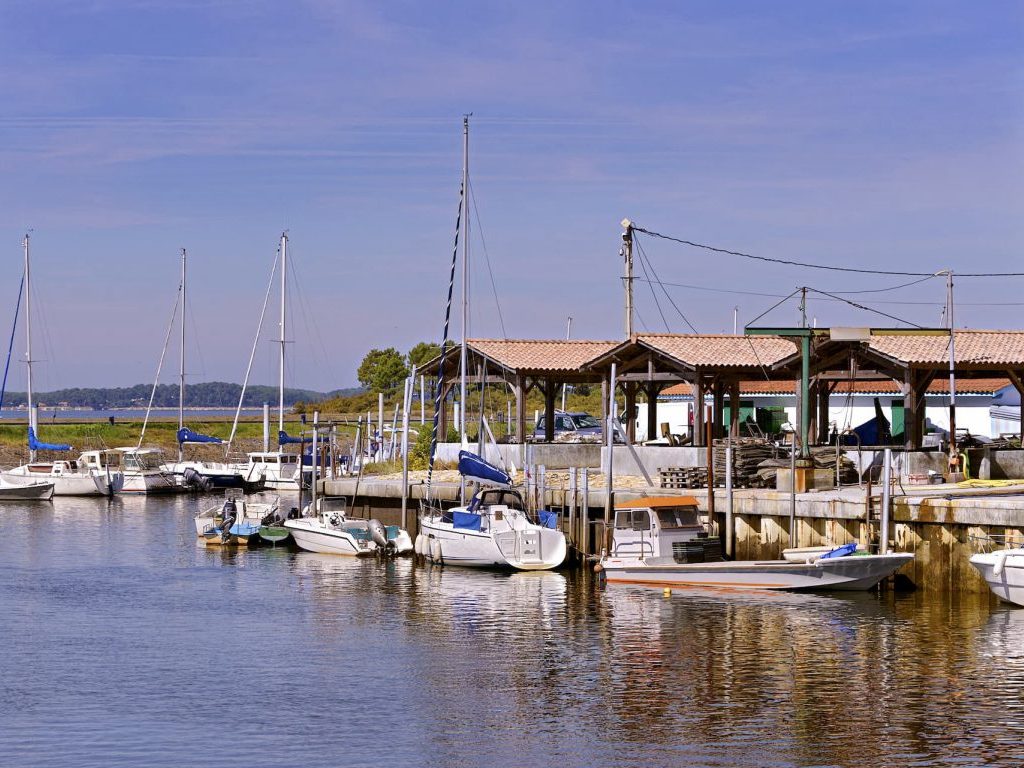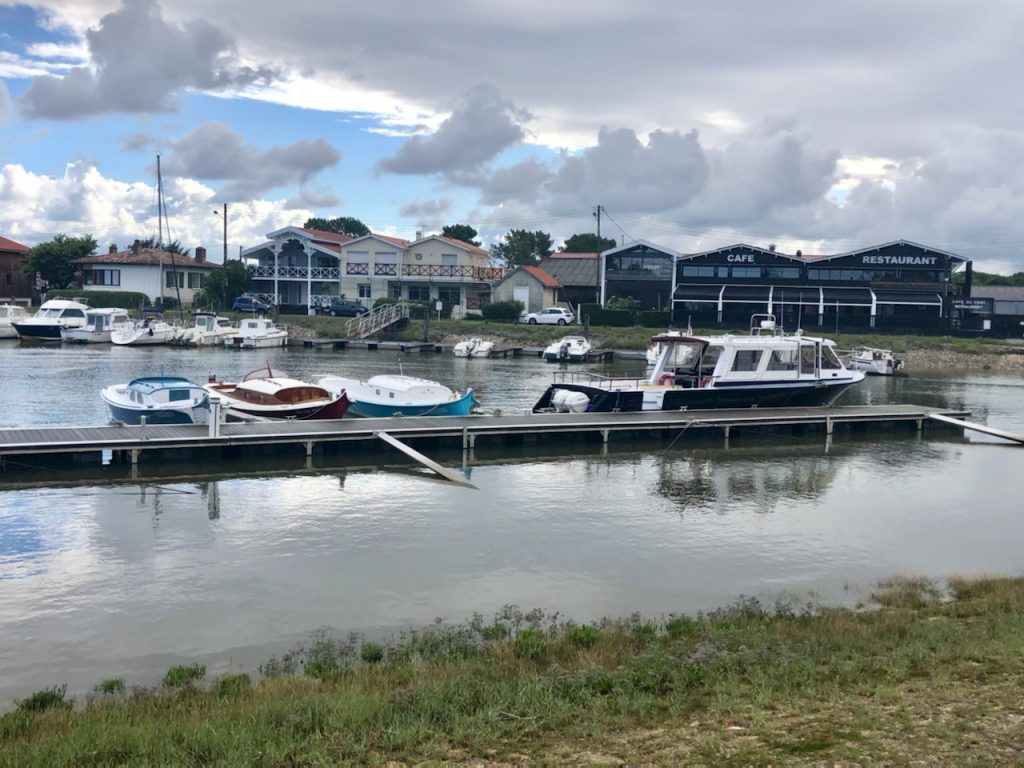Embarkation of the jetty of La Teste possible between 12 Apr 2024 et 09 May 2024 .
tidal problems limit the supply of departures.
Fiche horaires des départs de La Teste.
1. Future cruise(s) from La Teste from the Samedi 27 Juillet 2024
No scheduled excursion le Samedi 27 Juillet 2024.(Program may not yet be available).
2. Future Marine shuttles from La Teste from the Samedi 27 Juillet 2024
2a. Le Samedi 27 Juillet 2024
one sol;ution for Arcachon
Taxi boat. 
Going to Arcachon by embarking your bike allows you to return to La Teste by discovering bibe routes (5kM).
2b. Le Samedi 27 Juillet 2024
one solution for Ferret
Bateau Taxi. 
Going to Cap Ferret by embarking your bike allows you to return to La Teste by discovering bibe routes (75kM).
3. Future special boat trips from La Teste
No more Special tour programmed from La Teste (Program may not yet be available).
4. Future special boat trips from Arcachon
(Jetey Thiers in Arcachon 9 km from La Hume).| 29 Jul | 08h00 | Achat | Peche sur le Bassin | 04h00 | 34.0 € | 26.0 € | sur reservation 0557722828 |
| 31 Jul | 08h00 | Achat | Peche sur le Bassin | 04h00 | 34.0 € | 26.0 € | sur reservation 0557722828 |
| 31 Jul | 20h00 | Achat | Croisiere repas | 02h30 | 72.0 € | 40.0 € | 05 57 72 28 28 min:15 pax |
| 01 Aug | 20h00 | Achat | Croisiere repas | 02h30 | 72.0 € | 40.0 € | 05 57 72 28 28 min:15 pax |
| 02 Aug | 08h00 | Achat | Peche sur le Bassin | 04h00 | 34.0 € | 26.0 € | sur reservation 0557722828 |
| 02 Aug | 20h00 | Achat | Croisiere repas | 02h30 | 72.0 € | 40.0 € | 05 57 72 28 28 min:15 pax |
| 05 Aug | 08h00 | Achat | Peche sur le Bassin | 04h00 | 34.0 € | 26.0 € | sur reservation 0557722828 |
| 07 Aug | 08h00 | Achat | Peche sur le Bassin | 04h00 | 34.0 € | 26.0 € | sur reservation 0557722828 |
☎ : +33 5 56 54 63 14.
LA TESTE DE BUCH
Overview
La Teste-de-Buch remains one of the largest municipalities in France, not just one but three distinct entities that make it its wealth: the village, Cazaux and Pyla-sur-Mer.
History
Les Boïates
The history of the Teste is deeply linked to that of the Country of Buch . The first traces of settlement in the region date back to the 8th century B.C. when the Boïates, the Aquitaine people, settled near a place that is now the town of Teich. They fished, cultivated the land and developed the first techniques for making tar, useful for caulking boats.
Moyen Âge
Little is known about the history of the region until the early Middle Ages. Two types of people punctuated the local economic life: the fishermen who exploited the resources of the Arcachon Basin and the residents who exploited the resources of the forest. Life was rough and malnutrition-related diseases such as pellagra spread through the population.
Afforestation of mobile dunes
In the eighteenth century, and for some time now, the entire Landaise coast was threatened by the mobile sands that the wind charged daily, and in particular the village of Teste. The first artisans of dune settlement were the Buch Captains in 1713, who undertook to plant a few pines to slow down wind erosion, but the seedlings were burned after a few years. A certain Brémontier, came to the Teste in order to realize a navigable channel of the Bassin à l’Adour; which required the fixing of the mobile sands. This is how the whole of Gascony was upset by these transformations (and especially after the law of 18 June 1857 which ordered the municipalities to afforest their territories). Thus the pastoral system became a forestry system.
XIXe siècle
The agro-pastoral system was widespread in the moor to the east of the coastal dune fringe. Maritime trade also brought some income for fishermen. The village of Teste is made up of a hundred isolated houses placed without any order. the village gave an impression of poverty and desolation. The ebb and flow of the tides penetrated deep into the salt meadows and sometimes even overflowed into the city. Numerous experiments were carried out to enhance the agricultural value of the Cazaux plain. The Compagnie d’Exploitation et de Colonisation des Landes dug the Canal de Cazaux in 1835. In 1841, the train arrived at La Teste with the creation of the Bordeaux-La Teste line. This event will change habits, and the region is open to tourism. Before 1845 and the creation of a departmental road to Arcachon, to come from La Teste one must cross muddy salt meadows and follow a very bad sand road. Passages are therefore organized – by sea – from the port of La Teste, in pinnasses with sails or oars sometimes operated by solid women. In 1857, Arcachon became an independent commune of La Teste.


